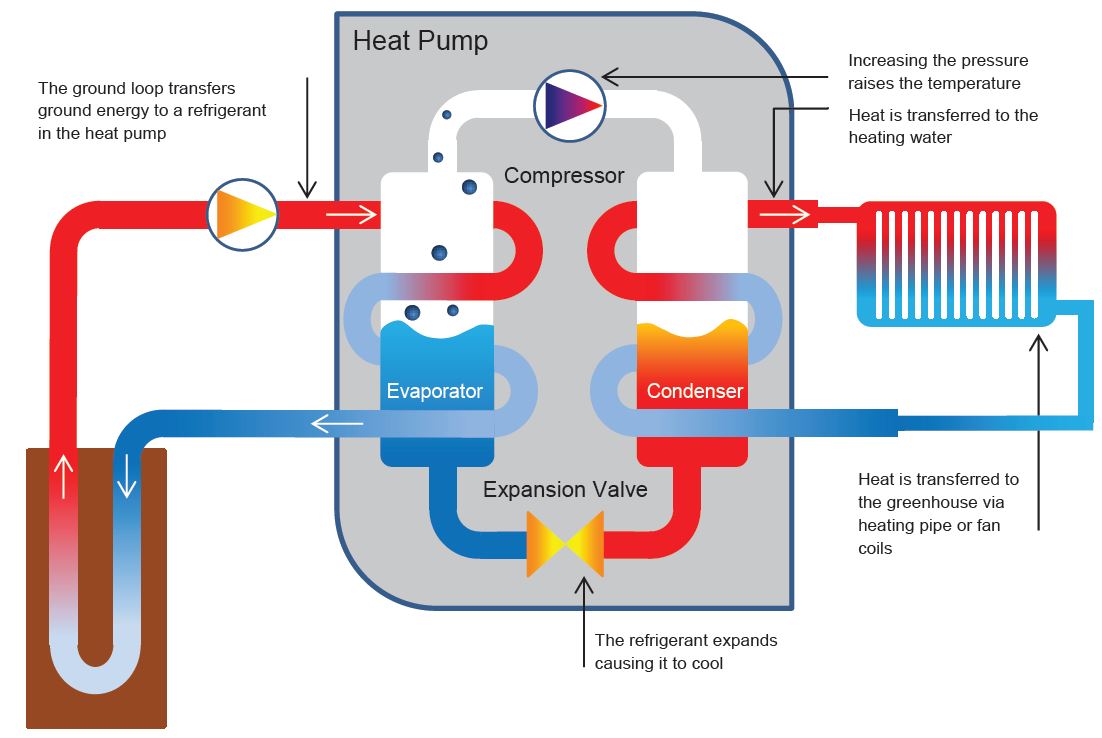Please click here to access the main AHDB website and other sectors.
- Home
- Knowledge library
- How does a heat pump work?
How does a heat pump work?
Read about the general principles of how a heat pump works, irrespective of type.
Back to: A detailed look at heat pumps and how they work
The heat energy contained in the ground or water loop is taken up by a refrigerant in the evaporator. The gas in the evaporator is warmed up. The gas is then compressed, which further increases its temperature and pressure. The gas is cooled in the condenser and becomes liquid – useful heat is obtained for space or water heating here. Following this, the high-pressure liquid refrigerant passes through an expansion valve, which rapidly decreases its pressure, causing the liquid to evaporate and become very cold. This allows the refrigerant to take up more heat for the cycle to continue.
A diagram showing how a heat pump works

Useful links
Information on the types of heat-pump systems
Practicalities of setting up a heat network
Visit our GrowSave pages to read more about energy-related topics
Got a question. Ask a member of the team:
Topics:
Sectors:
Tags:

